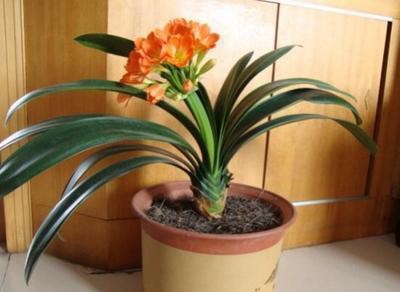Nine times out of ten, the gentleman's orchid has rotten roots. look how the old florist is doing well.

Uncle Li in Jilin is a fan of magnolia, but one day he watered him and found that two of the three orchids he had just transplanted had the whole plant tilted in the pot. so he recompacted the surrounding plants to prevent them from tilting, but after a period of time, he found that all three plants were tilted, and the leaves at the bottom of the base were rotten. It was only then that he realized the seriousness of the problem, and maybe the gentleman's orchid had rotten roots.
So he quickly poured out the pot to check, but as soon as he reached out his hand, the whole orchid shook in the plate and gently raised it up. The original sturdy root group had all rotted away, and none of the three magnanimous orchids were spared. The root base of one plant also rotted a soil hole the size of peanuts, which is really distressing. Therefore, flower friends who raise magnolia should pay attention to the fact that if they find the phenomenon of dumping, they must check in time to see if there are rotten roots and take measures as early as possible.
Measures to be taken: first clean the rotting roots of five Cymbidium plants, then rinse them with tap water, take advantage of the opportunity to spread all the decayed parts with carbendazim powder, or soak them with potassium permanganate, and then put them in a ventilated place to dry. In order to prevent water consumption caused by leaf transpiration, I put plastic bags on each plant, and then gathered the leaves of the whole plant into a bunch. After the rotten root magnolia smeared with a lot of carbendazim powder dried thoroughly.
Find a new flowerpot or foam box, first fill the bottom with some broken foam blocks and coal balls, then fill the flowerpot with pure sand, water it compacted, and poke several holes with a thick wooden stick, re-insert the rotten Magnolia into the sand table, then compact the sand surface, and continue to cover it with plastic bags to integrate a bunch of leaves, which can reduce leaf transpiration. It can not only bring more consumption to the injured orchid, but also maintain the stability after replanting, which is conducive to root germination and future observation.
After treatment, it was placed on the balcony, and then the water was dry and wet. After a month, five orchids had not tilted or rotted roots, and the leaves remained dark green all the time. After more than a month, it was found that each plant had produced new white, tender and sturdy roots, so he decided to replant it, so Uncle Li saved the rotten roots of Magnolia.
- Prev

My mother-in-law was ill in the hospital. I took care of my husband day and night. My mother-in-law was immediately released from the hospital.
My mother-in-law is ill in hospital. I take care of her day and night. My husband does a little trick. My mother-in-law left the hospital immediately. I envy other people's mother-in-law very much. Even if I can't love daughter-in-law as much as my daughter, I can at least avoid troubling daughter-in-law and respect each other.
- Next

These nine pictures are a true portrayal of the hearts of people with depression, which only they can understand.
In the past two years, there is a particularly popular saying: "these days, we dare not go out without a bit of mental illness." in fact, this is not a real mental illness, but because we live under stressful environmental factors from time to time.
Related
- Wuhan Hospital Iron Tree Blooming Result Was Instantly Frightened by the Gardener Master
- Which variety of camellia is the most fragrant and best? Which one do you like best?
- What is the small blue coat, the breeding methods and matters needing attention of the succulent plant
- Dormancy time and maintenance management of succulent plants during dormancy
- Minas succulent how to raise, Minas succulent plant pictures
- What are the varieties of winter succulent plants
- How to raise succulent plants in twelve rolls? let's take a look at some experience of breeding twelve rolls.
- Attention should be paid to water control for succulent plants during dormant period (winter and summer)
- Watering experience of twelve rolls of succulent plants
- Techniques for fertilizing succulent plants. An article will let you know how to fertilize succulent plants.

